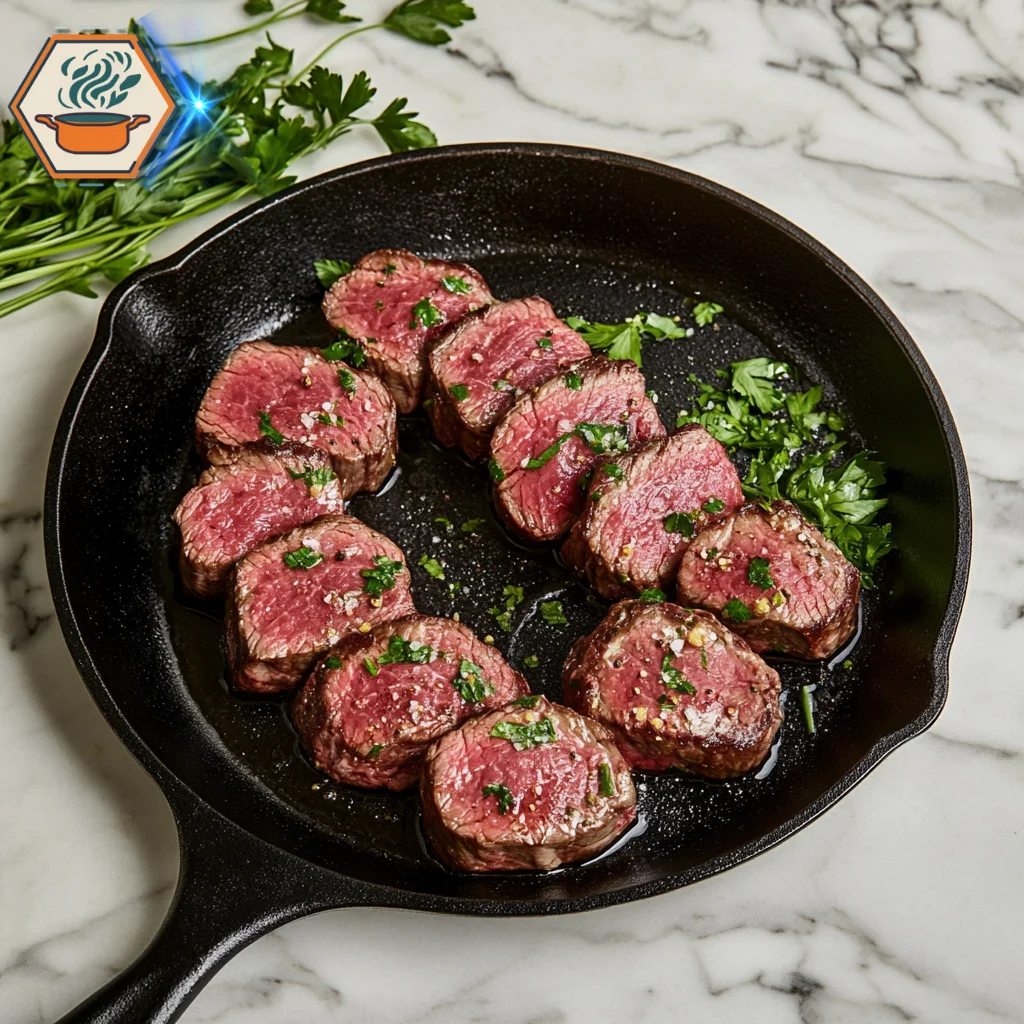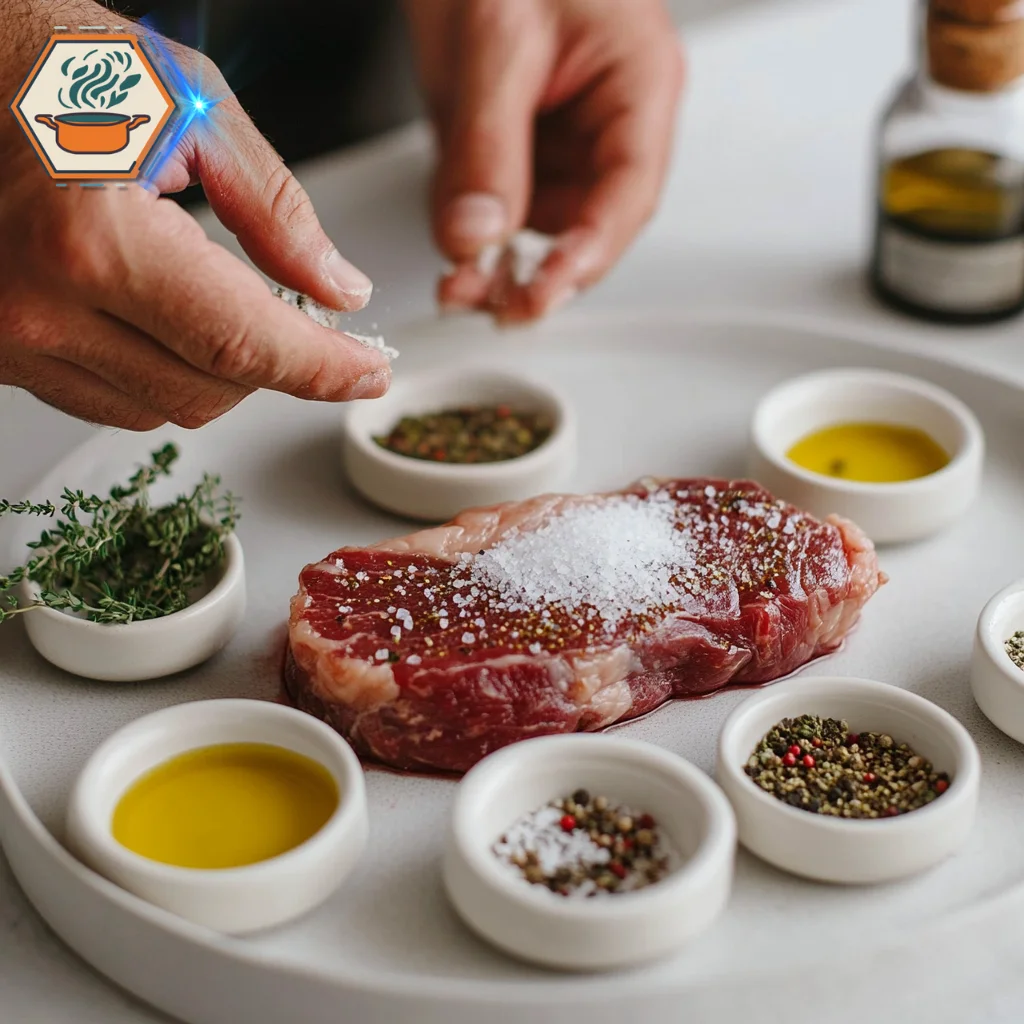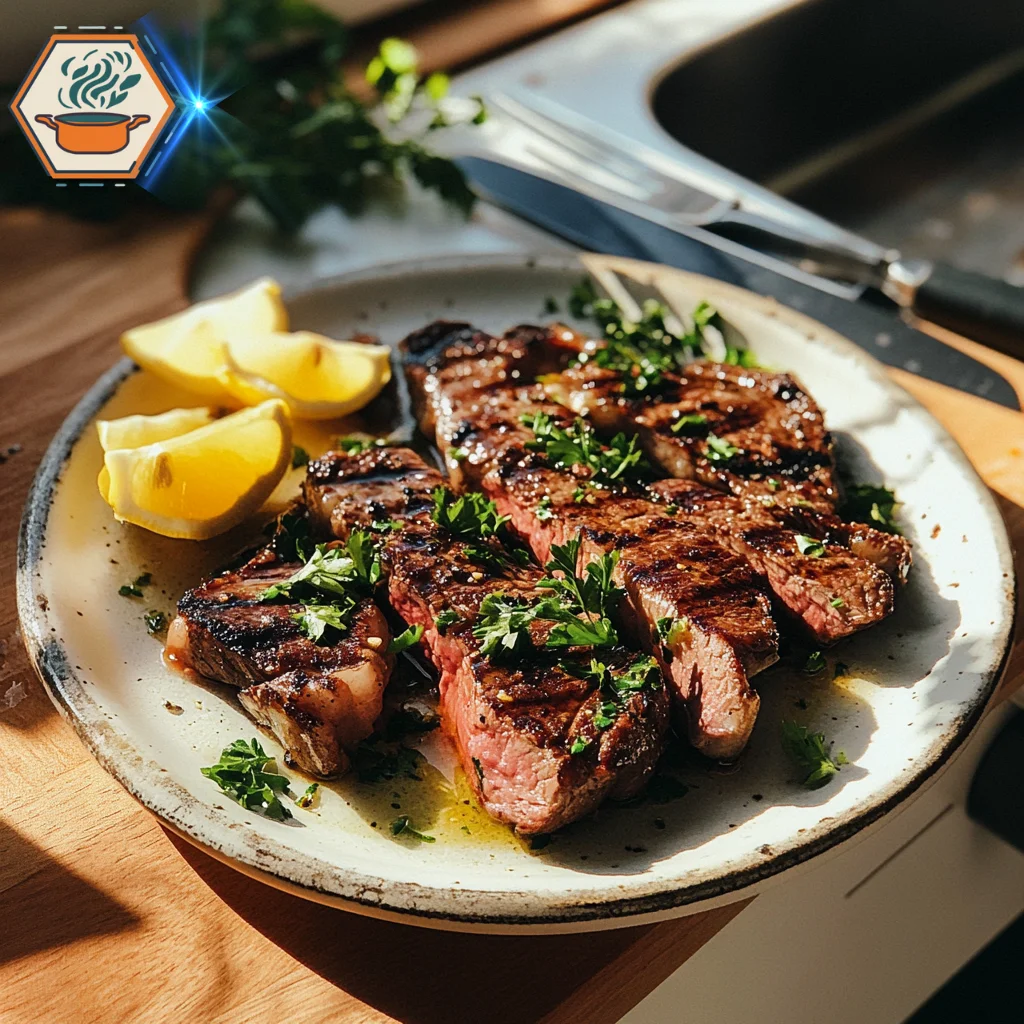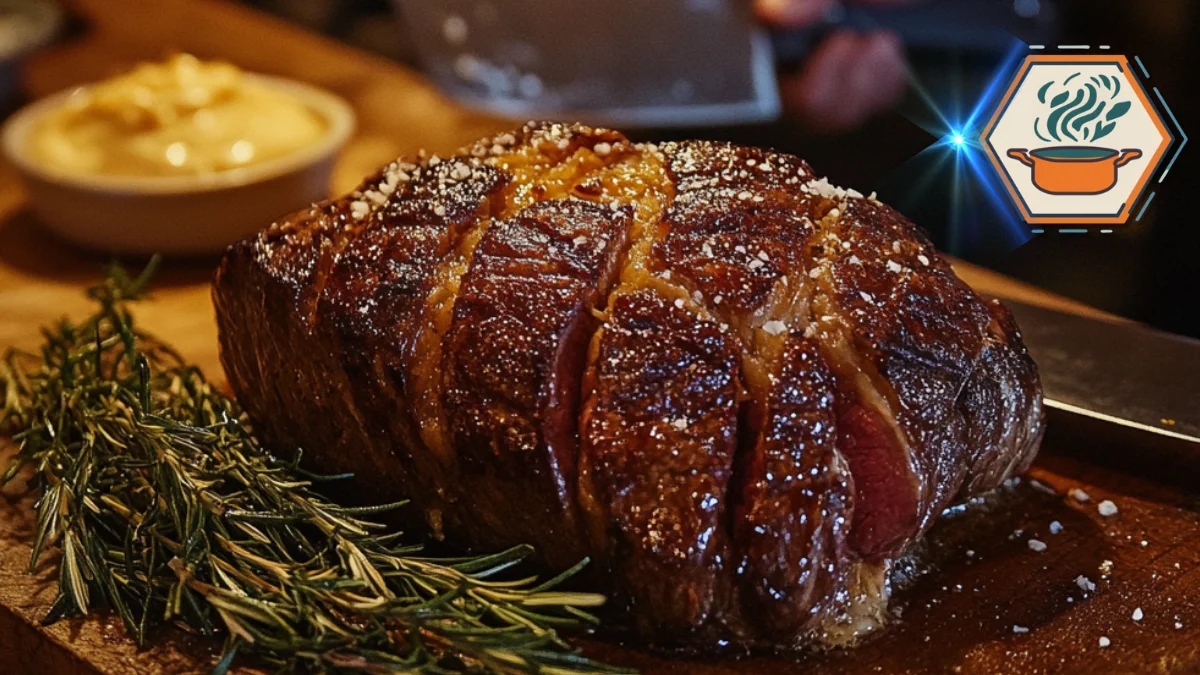Table of Contents
Understanding Picanha as a Cut of Steak
Introduction to Picanha
What is Picanha Steak?
Picanha, often referred to as the queen of Brazilian barbecue, is a triangular cut of beef that comes from the rump cap muscle of the cow. Known for its rich flavor and tender texture, this cut is particularly prized in South American cuisines, especially in Brazil, where it’s a staple at churrascarias (Brazilian steakhouses).
Unlike cuts such as ribeye or filet mignon, picanha has a distinctive fat cap that enhances its juiciness and adds an unmistakable depth of flavor during cooking. This fat layer is one of the reasons it stands out as a favorite among steak enthusiasts.
Origins and Popularity in Different Cuisines
The origins of picanha can be traced back to Brazil, where it’s traditionally seasoned with coarse salt and grilled on skewers over an open flame. However, its reputation has now spread worldwide, with foodies and chefs in the United States, Europe, and Asia incorporating this cut into their menus.
In Brazilian culture, the preparation of picanha is as much about tradition as it is about flavor. The simplicity of its seasoning highlights the natural taste of the meat, making it a versatile choice for various cooking methods and styles.
Why is Picanha Steak Unique Compared to Other Cuts?
What distinguishes picanha is its ideal combination of tenderness and robust flavor. Unlike premium cuts such as ribeye, which are heavily marbled, or filet mignon, known for its lean tenderness, picanha strikes the perfect middle ground. Its fat cap renders during cooking, bastes the meat, and infuses it with a rich, buttery flavor.
Additionally, its triangular shape and manageable size make it easy to handle, whether cooking for a small gathering or a large barbecue.
Characteristics of Picanha
Texture, Flavor Profile, and Marbling

Picanha boasts a tender yet firm texture, offering a satisfying bite without being overly chewy. Its moderate marbling contributes to its juicy and robust flavor, making it an ideal choice for grilling or slow-roasting.
The flavor profile of picanha is rich and beefy, often described as slightly nutty due to the melting fat cap. When cooked correctly, the outer crust develops a smoky, caramelized flavor, contrasting beautifully with the tender interior.
How It Differs from Ribeye, Sirloin, and Filet Mignon
- Ribeye: Known for its intense marbling and buttery flavor, ribeye is a more luxurious cut. However, picanha offers a similar level of juiciness at a fraction of the cost.
- Sirloin: While picanha comes from the rump, sirloin is cut from the rear back portion. Picanha tends to be more flavorful due to its fat cap.
- Filet Mignon: This cut is famous for its tenderness but lacks the bold flavor of picanha. If you’re seeking a steak that’s tender yet full of character, picanha is the better choice.
The Role of the Fat Cap in Enhancing Flavor
The fat cap is what truly elevates picanha. During cooking, this layer of fat melts and seeps into the meat, keeping it moist and flavorful. Instead of trimming the fat away, most chefs recommend scoring it lightly to allow even rendering.
This process not only adds flavor but also helps in creating a crispy, golden crust that enhances the steak’s overall texture.
For more information on the anatomy of beef cuts and their culinary uses, visit Wikipedia’s Beef Cuts Page.
Nutritional Value of Picanha
Macronutrient Breakdown
Picanha is a high-protein cut of beef, making it a great option for those following fitness or high-protein diets. A 3.5-ounce (100g) serving typically contains:
- Calories: Approximately 250-300
- Protein: 25-30g
- Fat: 15-20g (depending on how much of the fat cap is consumed)
Its high protein content makes it a satiating choice, while the fat provides energy and enhances the steak’s flavor.
Vitamins and Minerals Found in Picanha
In addition to protein and fat, picanha is a rich source of essential vitamins and minerals, including:
- Iron: Helps in oxygen transport and boosts energy levels.
- Zinc: Supports immune function and skin health.
- B-Vitamins: Important for energy production and brain health.
Consuming picanha as part of a balanced diet can provide these essential nutrients without relying on supplements.
Is It a Healthy Option?
While picanha is flavorful and nutrient-rich, its fat content means it should be enjoyed in moderation. Opting for grilling or broiling methods can reduce added fats while preserving its natural flavor.
If paired with nutrient-dense sides such as roasted vegetables or whole grains, picanha can be part of a healthy and well-rounded meal.
Cooking and Preparing Picanha Steak
Best Cooking Methods for Picanha
Grilling Techniques for a Juicy Picanha
Grilling is one of the most popular ways to prepare picanha, and for good reason—it highlights the natural flavor of the meat while giving it a smoky char. To achieve a juicy and flavorful picanha, follow these steps:
- Preheat the Grill: Adjust your grill to medium-high heat. A two-zone fire (direct and indirect heat) works best for picanha.
- Prepare the Picanha: Score the fat cap lightly in a crisscross pattern to help the fat render evenly during cooking. Avoid cutting into the meat itself.
- Season Generously: Traditional Brazilian churrasco-style picanha uses coarse salt, but you can also add black pepper, garlic powder, or smoked paprika for added depth.
- Sear the Fat Side First: Place the picanha fat-side down over direct heat to render the fat. This step takes about 5-7 minutes.
- Cook to Desired Doneness: Flip the steak and move it to indirect heat. To ensure a medium-rare result, cook the meat until its internal temperature measures 130°F (54°C).
Tip: Let the meat rest for 10 minutes before slicing to allow the juices to redistribute.
FOR Understanding the Foundation of a Great Meatloaf Secret, read our detailed guide on What is the secret to a great meat loaf?
How to Cook Picanha in the Oven or Sous Vide

If grilling isn’t an option, you can still achieve a delicious picanha using the oven or sous vide techniques.
In the Oven:
- Preheat your oven to 375°F (190°C).
- Heat a cast-iron skillet on the stove and sear the picanha fat-side down for 5 minutes.
- Turn the steak over and move the skillet into the oven. Roast for 20-25 minutes, depending on thickness, until the internal temperature reaches your preferred doneness.
Sous Vide Method:
- Season the picanha and vacuum-seal it in a sous vide bag.
- Cook it in a water bath at 130°F (54°C) for medium-rare, maintaining it for 2-3 hours.
- After sous vide, sear it on high heat for 1-2 minutes per side to develop a crispy crust.
Sous vide ensures consistent doneness and preserves the juiciness of the picanha, making it an excellent option for beginners.
Picanha on Skewers: Brazilian Churrasco Style
For an authentic Brazilian barbecue experience, try cooking picanha on skewers:
- Slice the picanha into thick strips, keeping the fat cap intact.
- Shape each strip into a “C” and secure it with a skewer.
- Season the meat with coarse salt and cook over an open flame or charcoal grill, turning frequently.
This method gives picanha its signature smoky, crispy exterior while keeping the interior tender and juicy. It’s a crowd-pleaser at any barbecue gathering.
For more insights into Brazilian churrasco traditions, visit Wikipedia’s Churrasco Page.
Tips for Perfect Picanha
How to Properly Season Picanha
Less is more when it comes to seasoning picanha. Coarse salt is the traditional choice, allowing the natural beef flavor to shine. If you prefer a more robust flavor, consider a rub made with garlic powder, smoked paprika, and black pepper.
Tip: Avoid over-seasoning as it can overshadow the steak’s natural richness.
Slicing and Trimming the Fat Cap: Do’s and Don’ts
- Do Score the Fat Cap: Lightly score the fat in a grid pattern to promote even rendering during cooking.
- Don’t Remove the Fat Cap Entirely: The fat is what gives picanha its signature flavor. Trimming it too much can result in a drier steak.
- Do Slice Against the Grain: When serving, always slice the meat against the grain to maximize tenderness.
Avoiding Common Mistakes When Cooking Picanha
- Overcooking: Picanha is best enjoyed medium-rare to medium. Overcooking can lead to a tough texture.
- Skipping the Resting Period: Letting the steak rest after cooking helps retain its juices.
- Using Low Heat: High heat is essential for achieving the perfect sear and caramelization.
Pairing Picanha with Side Dishes
Classic Pairings from Brazil
In Brazil, picanha is typically served with:
- Farofa: A toasted cassava flour mixture.
- Vinaigrette Salsa: A tangy mix of diced tomatoes, onions, and peppers.
- Rice and Black Beans: A hearty side that complements the richness of the meat.
Modern Fusion Ideas for Enhancing the Dining Experience

For a modern twist, pair picanha with:
- Grilled Vegetables: Asparagus, bell peppers, and zucchini add a fresh contrast.
- Garlic Mashed Potatoes: Creamy and flavorful, they balance the steak’s bold taste.
- Chimichurri Sauce: A zesty herb-based sauce that enhances the meat’s flavor profile.
Beverage Pairings: Wines for Picanha
The right beverage can elevate your picanha dining experience:
- Wines: Pair with a bold red like Malbec or Cabernet Sauvignon.
Evaluating Picanha as a Steak Choice
Why Picanha is a Good Cut of Steak
Affordability Compared to Premium Cuts
One of the most appealing aspects of picanha is its affordability. While cuts like ribeye and filet mignon are celebrated for their quality, they often come with a hefty price tag. Picanha, on the other hand, offers a perfect balance of cost and quality.
This cut provides a luxurious steak experience without breaking the bank, making it an excellent option for home cooks and chefs alike. Its price-to-flavor ratio is particularly attractive for those hosting large gatherings, as you can serve a crowd without exceeding your budget.
Versatility in Cooking
Picanha’s versatility is unmatched among steak cuts. Whether grilled over an open flame, roasted in an oven, or cooked sous vide, it delivers exceptional results every time. Its triangular shape and thick fat cap make it ideal for various preparations.
- Grilling: Perfect for backyard barbecues, picanha’s fat cap renders beautifully on a grill, creating a rich, smoky flavor.
- Oven Roasting: When roasted, picanha retains its juiciness while achieving a crispy outer crust.
- Sous Vide: This method ensures precise doneness, making it foolproof for beginners.
The flexibility in preparation methods makes picanha an excellent choice for both novice and experienced cooks.
Crowd-Pleasing Qualities: Flavor and Tenderness
Picanha’s rich, beefy flavor and tender texture make it a favorite for steak enthusiasts. Its fat cap not only adds flavor but also helps retain moisture, ensuring that every bite is juicy and satisfying.
The cut’s balance of tenderness and robust taste appeals to a wide range of palates, making it a reliable choice for entertaining guests. Whether served as a whole roast or sliced into steaks, picanha always delivers a memorable dining experience.
Potential Drawbacks of Picanha
Limited Availability in Certain Regions
Despite its growing popularity, picanha can be difficult to find in some areas, especially outside of Brazil. In many grocery stores and butcher shops, it’s often mislabeled or entirely unavailable.
If you’re unable to find picanha locally, consider seeking out specialty butchers or online meat suppliers that cater to specific cuts.
For more information on sourcing high-quality beef, visit Wikipedia’s Guide to Meat Cuts.
Misidentification or Low-Quality Cuts in Markets
Another common issue with picanha is misidentification. In some markets, less experienced butchers may label other cuts, such as sirloin, as picanha. Additionally, low-quality meat from poorly raised cattle can impact the cut’s flavor and tenderness.
To avoid disappointment, always look for the distinctive triangular shape and fat cap when purchasing picanha. Opting for trusted suppliers ensures that you’re getting the authentic cut.
Is Picanha Worth the Hype?
The answer largely depends on your personal preferences. If you’re looking for a flavorful, versatile, and cost-effective steak, picanha is undoubtedly worth it. Its distinct blend of tenderness and rich flavor sets it apart as a top choice in the world of beef.
However, if availability or quality is a concern in your area, you may need to explore alternatives or specialty suppliers to enjoy the full picanha experience.
Picanha in Comparison to Other Steaks
Picanha vs. Ribeye: Which One Wins?
- Flavor: Ribeye is known for its intense marbling and buttery richness, while picanha offers a more robust, beef-forward flavor enhanced by its fat cap.
- Cost: Picanha is significantly more affordable than ribeye, making it a better choice for those on a budget.
- Texture: Ribeye’s high-fat content gives it a melt-in-your-mouth texture, whereas picanha is tender with a slightly firmer bite.
Winner: It depends on your preference for marbling versus bold beef flavor. Picanha shines in its affordability and versatility.
How It Compares to Sirloin and T-Bone Steaks
- Sirloin: Picanha comes from the top sirloin cap but is more flavorful due to the fat cap, which sirloin lacks.
- T-Bone: While the T-bone combines two cuts (filet and strip), it lacks the concentrated flavor of picanha’s fat-rendered meat.
Picanha’s unique characteristics make it a compelling alternative to these cuts, especially for those seeking something different yet delicious.
Final Verdict: Is It the Best Option for You?
If you enjoy bold flavors, tender textures, and versatile cooking options, picanha is an excellent steak choice. It’s perfect for both casual meals and special occasions, offering an unforgettable dining experience without the premium price tag.
Whether you’re a seasoned steak lover or new to cooking beef, picanha’s combination of quality and value makes it a must-try.
FAQs About Picanha
How to Choose High-Quality Picanha?
- Look for a well-marbled triangular cut with a thick, even fat cap.
- Avoid meat that looks dry or discolored.
- Purchase from reputable butchers or specialty suppliers for the best quality.
Can You Cook Picanha Without a Grill?
Absolutely! Picanha can be prepared in an oven, on a stovetop, or using sous vide techniques. Each method delivers excellent results, making it accessible for home cooks without grilling equipment.
What Are the Most Popular Recipes Featuring Picanha?
- Brazilian Churrasco: Grilled picanha skewers seasoned with coarse salt.
- Picanha Roast: Oven-roasted picanha with garlic and rosemary.
- Picanha Steaks: Pan-seared slices served with chimichurri sauce.
This section provides a comprehensive evaluation of picanha as a steak choice, addressing its benefits, drawbacks, and comparisons to other cuts. By offering practical tips and answering common questions, it aims to guide readers in making informed decisions about this popular cut of beef.

